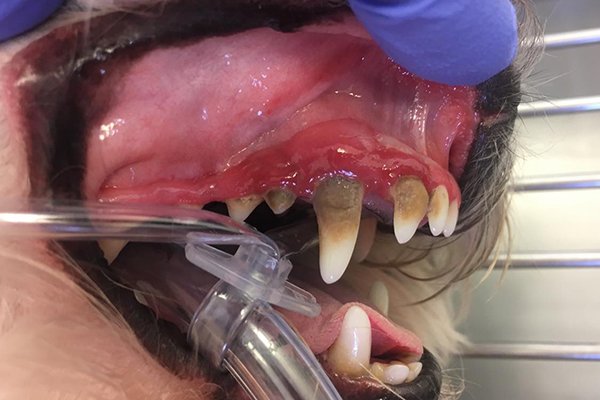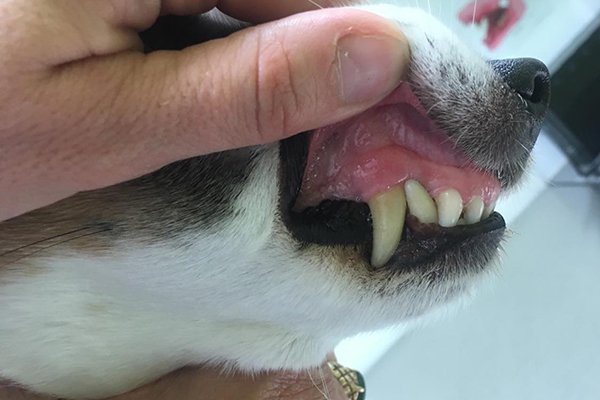How often should my pet get a routine dental clean?
The answer to this question is reliant on several factors such as the degree of periodontal disease present, genetic predispositions, lifestyle, and dental homecare provided to name a few. The earlier you can bring your pet in for a dental treatment, even as early as 1 year of age for many patients, the better.
If we consider, for example, how we age dogs with 1 dog year equivalent to 7 human years based on the speed of tissue aging, in a perfect world dogs should be having professional dental cleanings every THREE months! Now that is going by human standards for professional dental care once a year but also consider humans should be brushing, flossing and rinsing twice a day at home. The level of dental disease veterinary dentists see in their patients is commonly equivalent to what human dentists in third world countries see!
To put it simply, the frequency will vary but really should not be less frequent than 6 to 12 monthly in severely affected animals.
CASE STUDY - Max
When Max first presented to us at RVC, his owner noted he had quite “whiffy” breath however Max really didn’t like having his mouth looked at so it was difficult to examine his teeth while he was awake.
Once we anaesthetized Max, our dental team discovered the source of his bad breath: Max’s gums were severely inflamed and his teeth covered in tartar.
While he was asleep, he was given a thorough oral exam. Every tooth was examined, dental x-rays taken and a thorough ultrasonic scale and polish was performed to remove the tartar and plaque from above and below the gum line.
Once we anaesthetized Max, our dental team discovered the source of his bad breath: Max’s gums were severely inflamed and his teeth covered in tartar.
Max came back for his post op check 5 days later, what a difference! He felt so good, he even let us take a picture of his pearly white teeth while he was awake!
However, this is only the beginning of Max’s journey to manage his dental disease. A professional dental cleaning is only one part of the management of periodontal disease: the disease of the tissues surrounding the teeth.
Even with a diligent dental homecare routine that might include regular tooth brushing, gel application and dental diets, the plaque and tartar eventually comes back.
Max when he came back for his post op check 5 days later—what a difference!
This process happens a lot faster in dogs than it does in humans. On average dogs and cats can require dental treatments as frequently as 6-12 monthly to keep their mouths healthy and pain free.
Max came back for a checkup one year later, time for another clean!
Max one year later, time for another clean!




